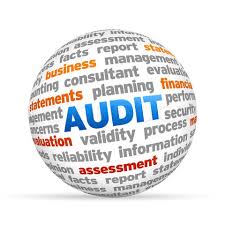Competence & Training
“To be competitive, build your competence.” – Sadhguru Jaggi Vasudev”

Will you allow an incompetent person to fly airplane?
Will you allow an incompetent person to cut your hair in barbershop?
Will you allow incompetent gym trainers to train you about your health?
Will you provide training to your gardener about Computers?
Will you force your child to study Engineering even if the child’s interest is in History?
But in real industrial life, all the above things do happen! In the majority of the organization,
The training need identification does not have any link with the organization’s goals!
The training demanded by the employees does not have any linkage with their job profile!
The training provided to the employees is never verified for its benefit to the organization!
No justification is asked for the effective use of the training budget (Return on Investment)!
The competence of the Trainer (especially internal) is based on availability and not Competence!
As per ISO 9000:2015, Clause 3.10.4, Competence is the ability to apply knowledge and skills to achieve intended results.
As per ISO 9001 & IATF 16949 Standard, clause 7.2, the following are the key expectations.
- Determine Competence: The first step is to find out the competence required for each role which can impact process and product requirements in the organization. The intent is that unless there is clarity, what kind of competence is needed for each role, it will be difficult to find the existing gap. Example: Design Engineer, Quality Head, Purchase Manager, Utility Head, etc.
- Competence Criteria: ISO 9001 has specified 3 key criteria for identifying the competences. They are Education, Training, Experience. Based on these criteria, the organization has to establish the requirements. Example: For a Quality Engineer in Tyre plant, the requirement of competency will be
Education: Bachelor of Engineering in Chemical or Mechanical
Experience: Minimum 2 years hands-on experience of working in Process Industry preferably related to Rubber
Training: Exposure related to 7 QC Tools, Problem-solving techniques, ISO 9001, IATF 16949, Data analysis.
- Gap Analysis: Although the organization may be functioning for many years, the intent is to identify the gap between existing competency and the criteria which have been decided. In some cases, due to job rotation, it is important to understand the gap so that it can be filled. Many times, shop floor operators are not aware of the impact of their work on the subsequent process or end customer. This knowledge is an important gap that needs to be filled. Some organizations also call it Competency Mapping. The activity is time-consuming and requires a lot of effort but it is worth doing it. Once done, it is easy to identify the gaps which may need to be filled.
- Action: There may be different ways to fill the gap. It includes Classroom Training, On the job training (OJT), Mentoring, reassignment (profile change), hiring competent person, etc. The objective is to ensure that desired action should result in meeting customer requirements and enhancing their satisfaction. The extent of the training will depend upon the criticality of their work and its impact. Example: a person shifting empty bins from one location to another will have different training than from a person who is transferring finished material in the bins as the criticality is different.
- Who should attend the training: All kinds of employees (Permanent, Temporary, Contract, Agency roll) who can impact internal requirements, customer requirement and legal requirements need to be trained.
Industry Challenge: Many organizations do not provide training to part-time or contract employees as their job is temporary but they may be doing work that may impact the quality of the product or services.
- Training Effectiveness: This is a very important step. Once the action has been taken, it is pertinent to measure the effectiveness of action taken. One of the most popular methods is the Kirkpatrick Model (4 stages of effectiveness monitoring). Examples: Achievement of Business goals, Reduction of a customer complaint, improved efficiency of the manufacturing process
- Documented information: The organization needs to maintain the record of training need identification, training plan, selection of faculty, training attendance, training effectiveness, updated skill matrix. The intent is to verify the records when needed.
Benefits of Training
- Increase employee satisfaction
- Repeat customer business
- Increase new sales
- Increase employee retention
- Creates an environment for innovation and collaboration.
Expectation from Management:
- Alignment with Business goals (New Business generation, New customer addition)
- Improvement in Bottomline (Profitability)
- Improvement in Customer Satisfaction (Customer rating)
- Improvement in customer metrics (Warranty, Delivery, Quality)
- Cost Reduction and improved efficiency (COPQ, OEE, Inventory Turnover)
- Enhanced employee satisfaction (Employee retention, improvement in activities like Kaizen, Quality circle, etc.)
Some question to ponder:
- How many organizations plan their training calendar based on their Business Plan?
- What are the criteria of participants’ nomination for internal and external training? Based on the gap analysis or availability of any person?
- How effective is training effectiveness monitoring?
- In how many cases, the person (Boss) conducting training effectiveness are themselves competent to do it?
- How many organizations have a methodology to verify, whether the profitability of the organization has improved owing to training?
References:
ISO 9000: 2015
IATF 16949: 2016
ISO 10018:2012, Quality management — Guidelines on people involvement and competence
This is the 37th article of this Quality Management series. Every weekend, you will find useful information that will make your Management System journey Productive. Please share it with your colleagues too.
Your genuine feedback and response are extremely valuable. Please suggest topics for the coming weeks.


Excellent article sir… You had nicely captured and also delivered the real aura of training and competence… Keep on doing it sir…
Regards
Competence and Training is the base for Quality management system. Very much useful information sir.
This article help many of us to share the importance of Competence and Training to Management.
Thanks
Very nice
Excellent article.
My interpretation of competence:
Combination of Knowledge set, Skill set, Mindset in three areas- Functional, Continuous Imrovement, and Behavioural to attain the purpose of specific role/designation of the person in organisation.
Dear Sir,
These article are so much refreshing and unique.
Very happy to see your commitment and knowledge which you are sharing with this world is such a great job for society.
Very simple words.
Easy to understand and practices.
Thank you for creating such a beautiful articles.
Thanks Mr. Huzur Saran.
Thanks Sabari
Thanks Debasis
Thanks Akhilesh. Truely said.
Thanks Arun. You know who gave the inspiration.
Thanks Yadavji.
Main factors to be considered for Job requirements-
1. Technical skills
2. Job related skills e.g.TPM,5S,Safety
3. Behaviour skills
4. QMS skills
Levels in each of these factors will vary from job to job. Gap between job requirements and occupant’s actual levels indicate Training Need Identification.
Thanks
Dear Mr. Borwankar, you have explained it very clearly and precisely.